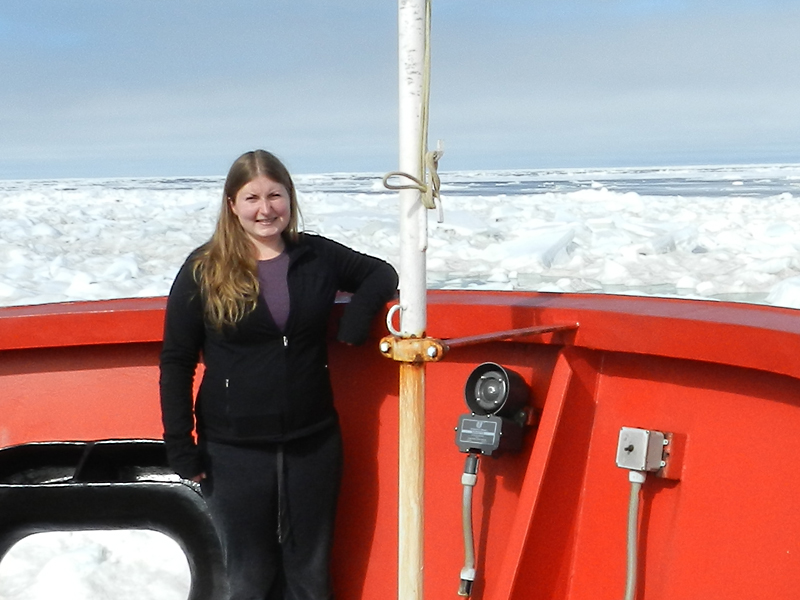Love of the ocean takes grad far
- Melanie Tromp Hoover

Most students—including Rhiannon Pretty—come to UVic for an education and a few years focused on something they truly love, but it’s not every undergraduate that ends up with a pair of seasoned sea legs to match their degree.
Raised in Metchosin and back on the coast after a UBC stopover and two years abroad in England, Pretty grew up close to—and achingly in love with—the ocean.
“Whenever I went to the beach I could spend hours sitting next to a tidal pool watching crabs eating as the tide came in or identifying invertebrates or just staring,” laughs Pretty, who graduates this month with her bachelor’s in biology and a slew of on-the-job experience, including a field school term and 18 days at sea in the Arctic.
“When I finally came back to Vancouver Island I knew I wanted to do marine science,” explains Pretty, “and my term out in Bamfield really solidified this decision; I was spending six days a week in class and enjoying every minute of it.”
A typical day in Bamfield meant waking up at 5 a.m. to catch the tides before spending four or five hours collecting species samples from both land and sea. Once the boats docked again, Pretty spent another few hours in the lab analyzing her day’s catch by running experiments and documenting samples—all in the name of an immersive research project that she designed.
“I was in the field all of the time in this tiny marine basin, connected to the local ecosystem in an amazing area for ocean productivity.”
But the hands-on side of Pretty’s degree just kept outdoing itself—earlier this spring she won an NSERC award that put her on an Arctic research expedition with associate professor Diana Varela’s phytoplankton project. July’s oceanographic cruise was part of the Distributed Biological Observatory, an international program aimed at monitoring ocean conditions in the north Bering Sea to create a time series of data that communicates (and eventually helps predict) changes happening in the Arctic region.
“It was an amazing experience,” says Pretty, a first-timer crossing the Arctic Circle and one the first undergraduate students to be given the job. “I was the only student there from Diana’s diatom productivity lab, so I got to make a lot of the decisions—what data collection processes were needed, what could and couldn’t be done, that kind of thing.”
Diatoms are a major group of algae and—as the base of the marine food chain—are useful for monitoring environmental conditions under the sea.
“The data I collected this summer are different from what was collected just last year,” says Pretty, explaining that diatom numbers were smaller this year. Because an 18-day cruise only gives researchers a snapshot of Arctic conditions, this shift could be affected by a number of factors, but it does point to substantial transformation under the ocean’s surface. “These changes made me want to learn so much more about the Arctic.”
On top of the hunt for diatoms, Pretty was treated to a visual feast every time she looked up from her work: walrus families ambling by on icy floes, orcas, humpbacks, minke whales and even an aerial shot of the caribou migration when her cruise was held up by ice and the team needed to be airlifted by helicopter.
“When you see the Arctic from the air, you get such a clear picture of everything that’s changing.”
This sobering view and her nonstop curiosity will add up to another degree for Pretty—the avid hiker plans to start her master’s somewhere in the Pacific Northwest in 2013 with an eye towards the base of the food chain, either working even more closely with Arctic phytoplankton or looking for other predictive changes happening just below the surface.

